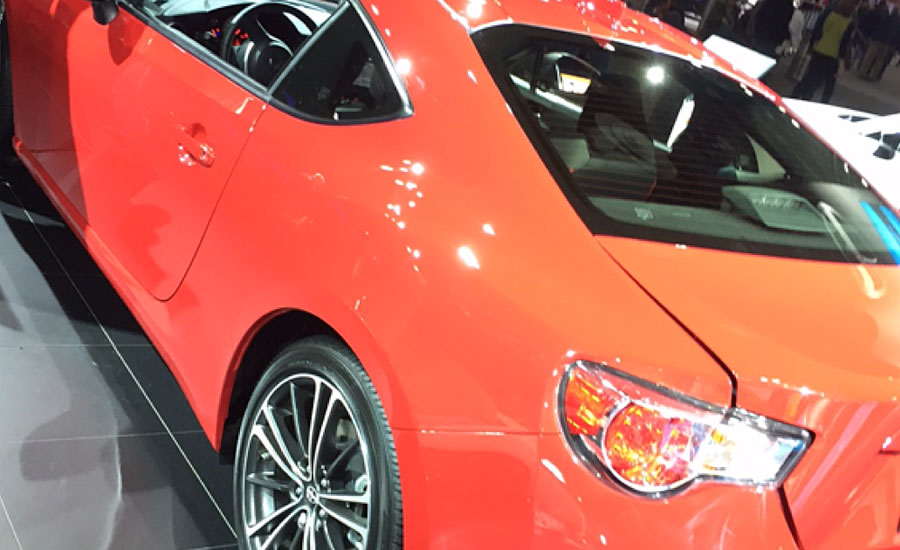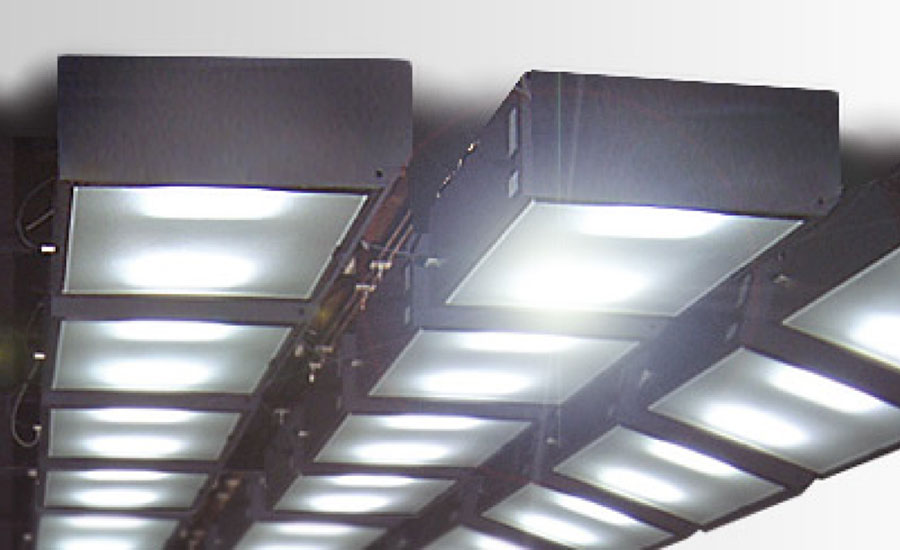Why Does It Take So Long to Produce New Car Colors?


Pigments and dyes have been around for centuries, but special-effect colorants are relatively new. Aluminum flakes, which make cars appear lighter or darker based on your angle of vision, were among the first. Newer 3D micas can actually make paint appear to change color, like the coating on this car, which appears red or orange depending on your angle of vision.



Harmony Rooms allow quality control to ensure all panels match, and the finish remains consistent under any light source, from dawn, to dusk, to the showroom floor.

With TAC 3D modeling software, what you see is what you get – in this case, a realistic simulation of how a paint coating will appear on a finished car.






Note: This article is originally from the X-Rite blog at http://blog.xrite.com/new-car-colors/.
Earlier this year, Detroit hosted the North American International Auto Show. It’s an exciting event for consumers who want a sneak peek at what’s on the horizon in the automotive industry. Energy efficiency, new gadgets, enhanced comfort and of course, the latest paint colors and special-effect finishes.
For years, white has been the most popular car color, but more varied colors are starting to emerge. USA Today’s Chris Woodyard wrote that blue was a new color trend at this year’s auto show. It is also rumored that automotive paint suppliers are including brighter colors in their 2019 automotive color collections.
It’s only 2016. Why such a long wait for new colors? Believe it or not, producing a new auto color can take up to five years from inspiration to the showroom floor. It’s a long, tedious process for designers, paint companies, and auto manufacturers; but innovative color measurement technology is changing the game and speeding up time to market.
Moving from Inspiration to Production
It All Begins with an Idea
Inspiration for future auto colors can come from just about anywhere – architecture, the beach, the grocery store, even a Paris fashion show. However, it’s not as simple as choosing a bright red poppy flower from the park or a muted yellow scarf from the runway and putting that color on a car.
Designers use inspiration as a starting point; then they must consider:
- How the proposed color will look under different lighting conditions. Will a muted yellow look like Dijon mustard under showroom lights?
- How special effects and paint finishes will affect the color and appearance. Will consumers like the look and want to purchase it?
- Does the color inspiration align with what suppliers have to offer through their pigments, dyes and colorants?
Customers pay for unique colors. That’s what the car manufacturers want to see, and what color and appearance designers must deliver. Once a design color is selected, the automotive manufacturer works closely with the paint suppliers to figure out to how create the color and how it will look in production.
Formulating Colors and Special-Effect Finishes
Formulating paint color is not easy, and it can take months to get it right. Using trial and error, the paint company mixes and remixes pigments, dyes and special-effect colorants. Once a formula is appealing, they prepare a standard to submit to the auto manufacturer. This isn’t a swatch on a square of cardboard; it’s an actual car panel that has been sprayed and cured just as the car will be, with a base coat, an interference coat like mica in the middle and a clear coat on top.
In most cases, that first sample is not accepted – it may need more green, more gloss, more special effects – and its back to the drawing board for a new formulation and creation of a new sample. This cycle can recur several times.
Once the paint company gets approval on a small panel, they submit a larger panel or even spray an entire car to show what the color will look like in the real world. Testing the formula on larger surfaces allows designers to see how the color and finish will appear under different lighting conditions and from different angles. In some cases a color might look great on a small panel, but not on the curves of a real car.
It’s a tedious process, one that can last for months, even years, until the auto manufacturer is satisfied that the color appearance is the best it can be.
Why are Auto Manufacturers so Picky?
When you’re mass-producing parts for thousands of cars in different plants, the coating has to be perfect. If the parts don’t match during final assembly, the car will be rejected. Due diligence during the color and appearance formulation stage is important to keep production costs down. After all, getting the colors right is just as important as getting the right colors.
How Can Technology Help?
Handheld Appearance Measurement Devices
Metallics, pearlescents and other complex finishes are beautiful, but they are challenge to control. How do you quantify the amount of shimmer or pearlescence of a special-effect coating? Luckily for auto manufacturers and paint labs, color measurement technology has come a long way.
X-Rite’s MA98 handheld spectrophotometer uses proprietary technology that is able to quantify color as well as the surface and subsurface qualities of special-effect coatings. It measures from 10 different angles to produce a dimensional portrait of the surface that is very similar to the way the human eye would perceive it. When paired with X-ColorQC® software, this data can recorded, reported and controlled for consistency.
Controlled Lighting
From inspiration through production, lighting is very important in the automotive industry. Light booths, like the X-Rite Judge QC, can be used during the early formulation stages to ensure the color and special-effect coatings look as they should under daylight, moonlight, incandescent garage light and fluorescent showroom light. Designers paint small panels that mimic car parts and set them inside a light booth to evaluate how the appearance changes under different light sources.
When it’s time to evaluate how a coating will look on an entire car, you need something bigger. Much bigger.Harmony rooms are customized lighting evaluation rooms with luminaries mounted throughout the ceilings and sometimes the walls. Once the vehicle is painted, they drive it inside, flip on the lights and see how an entire car looks under multiple lighting conditions.
3D Appearance Capture Software
Blending color and appearance during the design and formulation phases can help improve time to market by making it easier to see the effects of paints and coatings early in the process. X-Rite’s Total Appearance Capture (TAC) 3D modeling software accurately renders automotive effect paints to capture and display variable color and gloss, shadows, and complex surfaces into photo-realistic, virtual prototypes.
TAC is not a simulation. It’s an actual rendering of the measured reflectance behavior of the surface. So instead of presenting a flat panel of a proposed color formula, paint manufacturers can present a visualization of their paint coating on a car.
By incorporating innovative technology advancements such as TAC into automotive design and CAD applications, manufacturers no longer need to wait for physical samples to test color and appearance. Paint formulation time can be shortened, streamlining the process for both auto manufacturers and suppliers.
What Lies on the Color Horizon?
Those brighter and more varied colors that are expected to appear around 2019 are probably somewhere in the formulation stage right now. We’ll just have to wait and see which ones survive the long journey from inspiration through production, and how technology helps to speed up the process.






